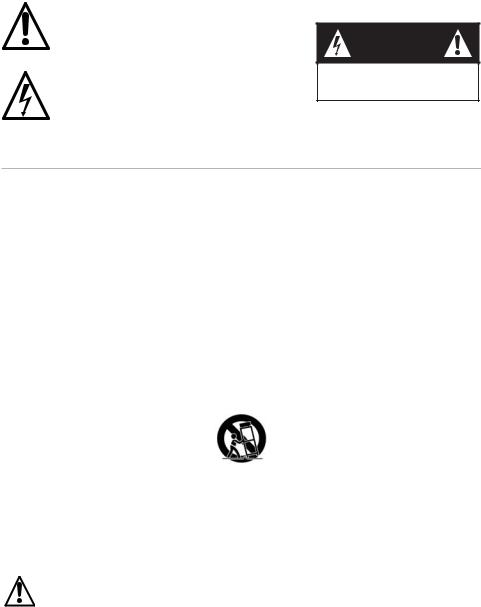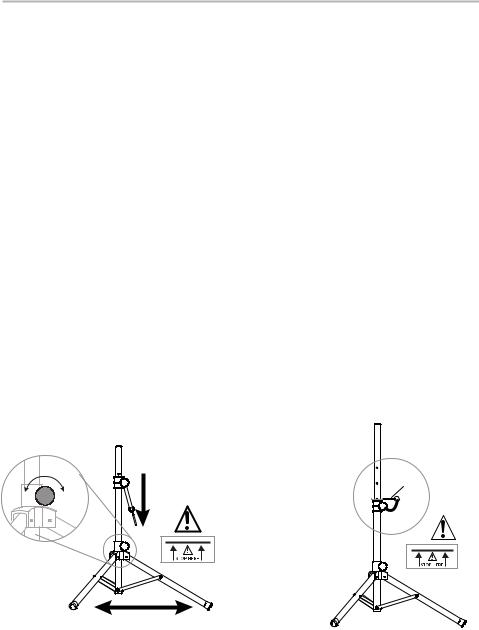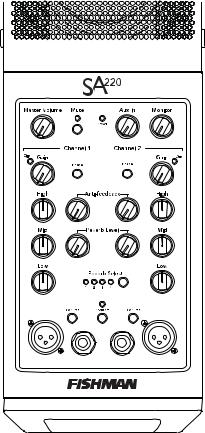Fishman SA220 Manual

www.fishman.com
USER GUIDE SA220

Whenever this symbol appears, it alerts you to the presence of important operating and maintenance (servicing) instructions in the user’s manual for this amplifier.
Wherever this symbol appears, it alerts you to the presence of uninsulated dangerous voltage inside the enclosure that may be sufficient to constitute a risk of shock.
CAUTION
Risk of electric shock.
Do not open.
No user serviceable parts inside. Refer servicing to qualified personnel. Do not expose to rain or moisture.
Important Safety Instructions
To ensure your personal safety and the safety of others, operate this apparatus only after reading these instructions
and heeding the warnings listed below.
1.Read these instructions.
2.Keep these instructions.
3.Heed all warnings.
4.Follow all instructions.
5.Do not use this apparatus near water.
6.Clean only with a dry cloth.
7.Do not block the ventilation openings. Install in accordance with the manufacturer's instructions.
8.Do not install near any heat sources such as radiators, heat registers, stoves or other apparatus (including amplifiers) that produce heat.
9.Do not defeat the safety purpose of the polarized or grounding-type plug. A polarized plug has two blades with one wider than the other. A grounding-type plug has two blades and a third grounding prong. The wide blade or the third prong are provided for your safety. If the provided plug does not fit into your outlet, consult an electrician for replacement of the obsolete outlet.
10.Protect the power cord from being walked on or pinched, particularly at the plugs, convenience receptacles and the point where they exit from the apparatus.
11.Use only attachments/accessories specified by the manufacturer.
12.Use only with a cart, stand, tripod, bracket or table specified by the manufacturer, or sold with the apparatus. When a cart is used, use caution when moving the cart/apparatus combination to avoid injury from tip-over.
13.Unplug this apparatus during lightning storms or when unused for long periods of time.
14.Refer all servicing to qualified service personnel. Servicing is required when the apparatus has been damaged in any way, such as a power-supply cord or plug is damaged, liquid has been spilled or objects have fallen into the apparatus, the apparatus has been exposed to rain or moisture, does not operate normally, or has been dropped.
15.Do not expose the apparatus to dripping or splashing liquids and do not place objects filled with liquids (such as a beverage container or a vase) on the apparatus.
16.Warning” To reduce the risk of fire or electric shock, do not expose this apparatus to moisture.
17.The apparatus should be connected to mains outliet with a protective earthing connection.
Disconnect device is Mains Plug, which should remain readily operable.
Copyright © 2008 FISHMAN TRANSDUCERS, INC.
All rights reserved. No part of this document may be reproduced in any form without the written permission of FISHMAN TRANSDUCERS, INC.
2

Welcome
Thank you for making Fishman a part of your acoustic experience. We are proud to offer the finest acoustic amplification products available; high-quality professional-grade tools which empower you to sound your very best.
Before using your SA220, carefully read the following sections:
Important Safety Instructions (Page 2)
Getting Started (Page 4 and 5)
Save Your Packing Materials
The box and packing materials for the SA220 were specially designed to protect the amplifier during shipping. Save all this stuff in case you need to re-ship the SA220.
Troubleshooting
Should you have any problems, please check with your installer or refer to the online installation guide for this product. Technical support, troubleshooting tips and installation information can be found at http://www.fishman.com/support/
Hear This!
The SA220 amplifier is capable of cleanly reproducing the sound of your instrument at very high volume levels. Prolonged repeated exposure to high sound pressure levels (SPLs) without protection can cause permanent hearing loss. OSHA has set guidelines and specified permissible sound-exposure limits for those who work in high SPL environments.
Permissible Noise Exposures
Duration per day, hours |
Sound level dBA slow response |
|
|
8 |
90 |
6 |
92 |
|
4 |
95 |
|
3 |
97 |
|
2 |
100 |
|
1 1/2 |
102 |
|
1 |
105 |
|
1/2 |
110 |
|
|
1/4 or less |
115 |
|
|
|
To ensure against permanent hearing loss, wear hearing protection when you perform with amplification.
SA220
Tested to Comply
With FCC Standards
FOR HOME OR OFFICE USE
3

Getting Started
Here are some basic setup tips to help get you going. To operate your SA220 safely, please read the entire manual, especially the Important Safety Instructions on page 2.
Setting the SA220 on its Stand
SA220 is intended for use with the included tripod speaker stand in portable applications where the amplifier and stand are to be placed directly on a level, solid, flat surface. Do not substitute the speaker stand with a non-Fishman part or attempt to mount or suspend the SA220 in a permanent or temporary method other than that as described in this guide or by Fishman.
1.Locate the stand in a place that is free of obstructions, where it may be accidentally pushed over, or where it may be a trip hazard.
2.Loosen the lower of the two large thumbscrews and spread the tripod legs.
Follow the height warnings printed on the stand for safe operation
(Figure 1). Setting the height outside this area is forbidden.
Tighten the thumbscrew before placing the SA220 on the stand.
3.Remove the safety pin and loosen the top large thumbscrews. Extend the top tube to the third hole or lower if you are seated while performing.
Replace the safety pin. Allow the tube to rest on this pin and tighten the top thumbscrew (Figure 2).
4.Lift the SA220 using the handle on the back of the unit while supporting the weight with your other hand. A guide is molded into the underside of the SA220 and acts as an aid in positioning the SA220 onto the tripod. Once positioned, lower the SA220 onto the tripod until it rests firmly on the tube.
Warning: Follow the height warnings |
|
printed on the stand for safe |
|
operation. Setting the height outside |
|
this area is forbidden. |
Safety Pin |
Loosen Tighten
|
Max. stand diameter: 43inches / 110cm |
Figure 1. |
Figure 2. |
4

Cabling Precautions
When making your cable connections, always be sure to route the cables so that the audience, performers, or anyone else will not trip over them or accidentally pull the SA220 over.
Setting SA220 Controls
1. Plug the provided AC line cord into the back of the amplifier.
2.Locate the Power switch and switch it off, then connect the power cord.
3. Plug the SA220 into an electrical outlet with the appropriate AC voltage.
4. Push in the Mute switch and turn on the Power switch. You should see the front panel power LED glow green.
5. Connect your instrument to the Channel 1 input with a shielded 1/4-inch cable.
6. Play aggressively and raise the Channel 1 Gain knob until the Clip LED flashes, then back off the Gain until no clipping occurs.
7. Set the controls as shown here.
8.Push the Mute switch (out) and
slowly raise the Master Volume to the desired level.
5

Front Panel Controls
The following pages describe the functions of each control or jack on the SA220 front and rear panels. Refer to these numbered diagrams for each numbered control on the following pages.
1.Mute – The Mute switch shuts off the signals from Channels 1 and 2 to the speakers and all the XLR outputs. The mute does not affect the Aux Input, Monitor Input, Tuner Out or the effects sends.
2.Master Volume – Set the overall level of the SA220 with the Master Volume.
Note: Controls 3 through 13 are identical for both channels.
3.Clip LED – The Clip LED will light when the Gain level is too high and the signal becomes distorted. If the light comes on when you play, lower the Gain until the distortion goes away.
4.Gain – Use the Gain knob to set the level of the signal.
5.Phase – Use the Phase switch in conjunction with the Anti-Feedback filter to eliminate acoustic feedback. To learn more about acoustic feedback, see page 14.
6.High – Boost highs to add “air” to the sound of the instrument. With the knob set at 12 o’clock, the control is effectively out of the circuit.
7.Anti-Feedback – If you encounter low-frequency feedback, sweep this control to isolate and eliminate it. To learn more about acoustic feedback, see page 14.
8.Mid – This control affects how well the instrument blends in or stands out in the mix. At loud volumes a midrange cut will achieve a more natural sound. With the dial set at 12 o’clock, the control is effectively out of the circuit.
9.Reverb Level – Controls the amount of digital reverb in the channel.
10.Low – Boost here to add weight to the sound. In general, boost bass at low volumes and flatten it out (or cut) at higher levels. With the dial set at 12 o’clock, the control is effectively out of the circuit.
6
